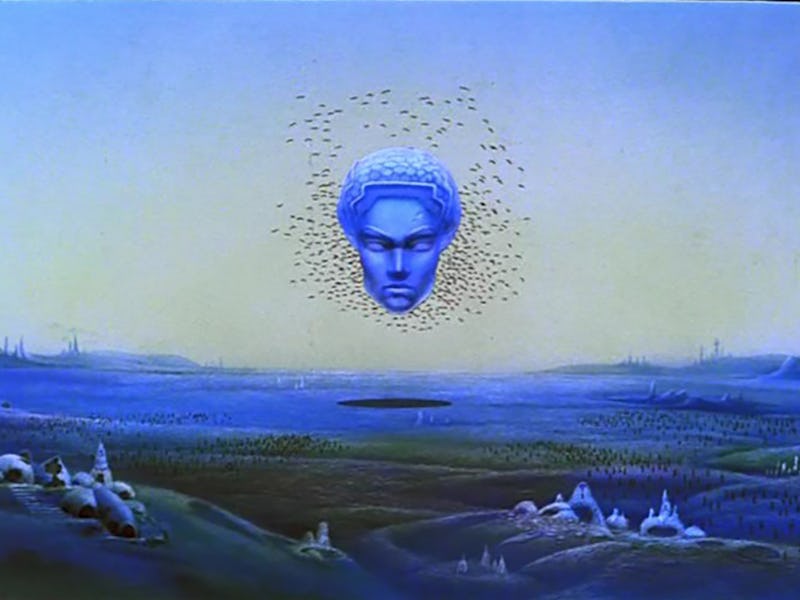Sci-fi legend René Laloux’s final movie is his most opaque — and maybe his best
It doesn’t get weirder than this.

“In a thousand years, Gandahar will be destroyed. A thousand years ago, Gandahar will be saved and what can’t be avoided will be.”
The riddle at the heart of legendary French animator René Laloux’s strangest movie is as confusing as the film itself. By the end of Gandahar, you may not understand either, but you’ll have experienced one of the most ambitious and beautiful time-travel stories ever told.
Originally released in the United States on Jan. 28, 1988 (and a month earlier in France), Gandahar might not be as famous as Laloux’s better-known debut, Fantastic Planet, but it occupies a special place in his trilogy of sci-fi films. Here’s why it’s worth watching 35 years later.
Born in 1929, René Laloux is known for his trippy and imaginative science fiction. For his second film, he teamed up with famous French cartoonist Jean Giraud (Mœbius) and together they released Time Masters in 1982. But Laloux struggled to get his third project off the ground and only succeeded after partnering with a North Korean animation studio called SEK. (Fun fact, SEK also animated The Simpsons Movie and an episode of Avatar: The Last Airbender.)
The plot of Gandahar is both simple but also impossible to explain. It opens in the peaceful realm of Gandahar where an alien race seems to live in harmony with nature (if it helps, picture that weird beach scene from Valerian and the City of a Thousand Planets). Then, suddenly, an army of robots appears, using lasers to turn the Gandaharians to stone and dragging away their victims for some unknown purpose.
In response, the Gandaharians send one of their own, Sylvain, out into the world to figure out why they’re being attacked. His adventures include meeting a civilization of “Deformed” mutants, falling in love, and encountering a giant evil brain. There’s also time travel.
Sylvain eventually learns the dark truth about both Gandahar and its attackers, solves that bizarre riddle everyone keeps repeating throughout the movie, and saves the day — I think, it gets very weird at the end.
The peaceful Gandaharians...
... and their evil robot attackers.
The entire movie is a not-so-subtle metaphor for fascism, with the robots serving as stand-ins for Nazi soldiers. Laloux grew up in Nazi-occupied France, and it’s clear he’s working through some personal trauma here, although with enough wacky sci-fi to keep the plot from ever feeling too heavy.
The story is appealingly weird, if somewhat unsatisfying, but it's Laloux’s sci-fi visuals that will keep you engaged. Like Fantastic Planet and Time Masters before it, Gandahar is a kaleidoscope of surreal images and concepts. The North Korean animation isn’t quite as impressive as the director’s previous films, but to be fair, that’s a very high bar.
The “Deformed” mutants.
Notably, Gandahar is also the only Laloux film to get a proper Hollywood release. Miramax released the movie under the title Light Years in the United States, with Harvey Weinstein (unfortunately) directing the translation. The English voice cast includes Glenn Close and Christopher Plummer, among others. (Plummer plays the evil brain, but he kind of phones it in, to be honest.)
For all its faults and messiness, Gandahar is a fun and quick watch. It’s also required viewing for anyone who’s seen Fantastic Planet and wondered if the director made an even weirder follow-up. While it’s not streaming officially anywhere at the moment, you can probably find a version online without too much trouble through a bit of Googling. Just don’t blame me if you come away totally confused by this forgotten time-travel adventure.
This article was originally published on